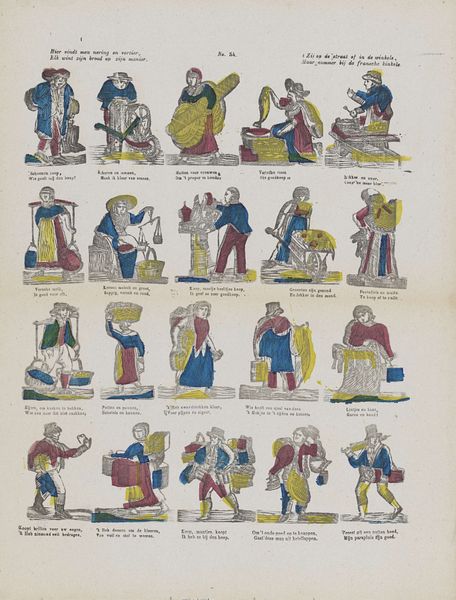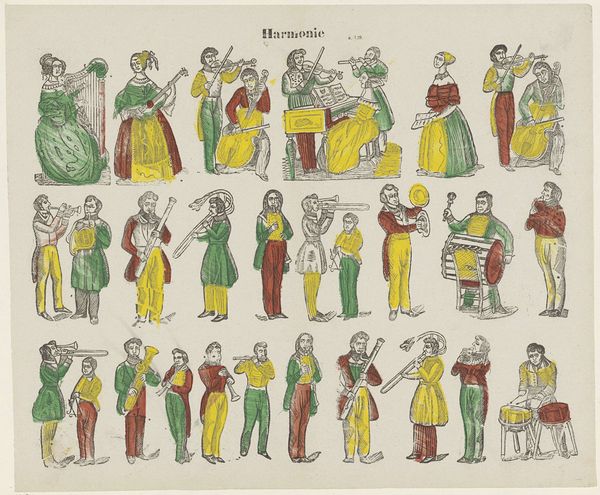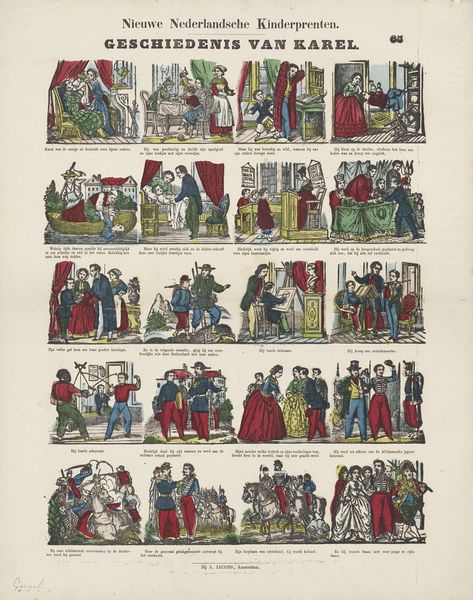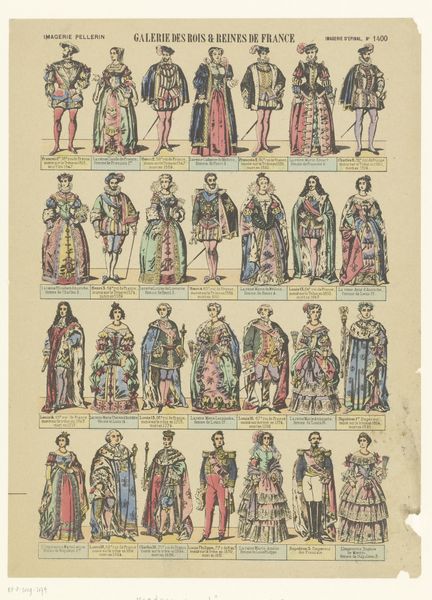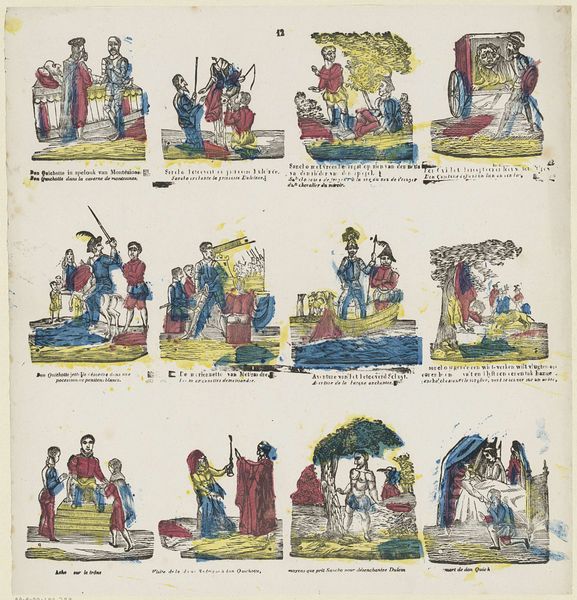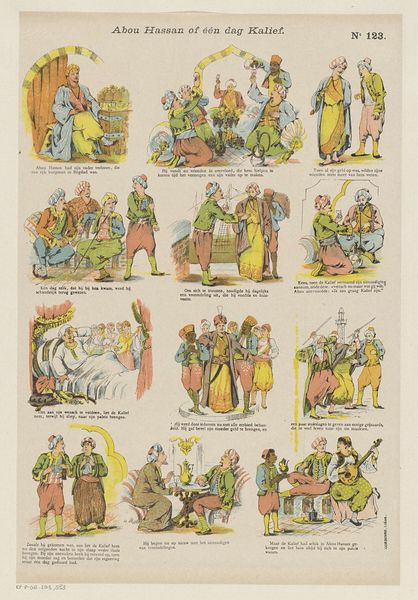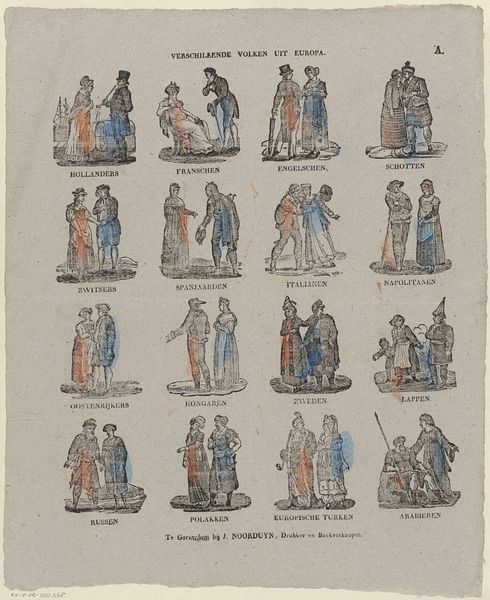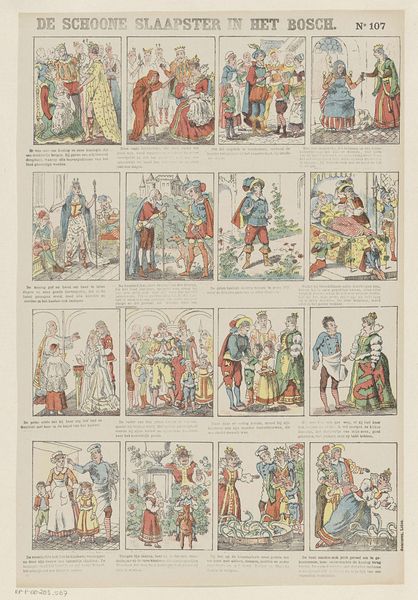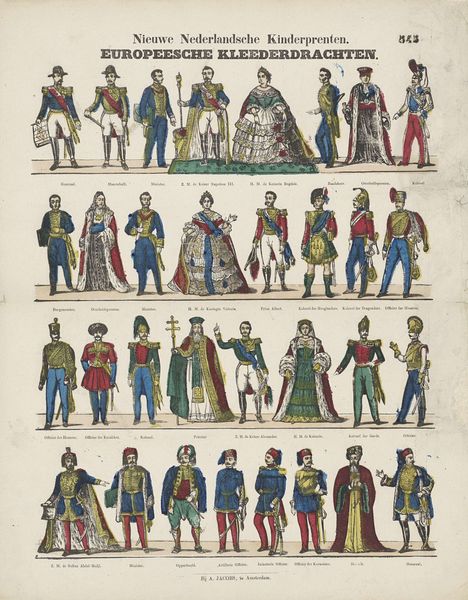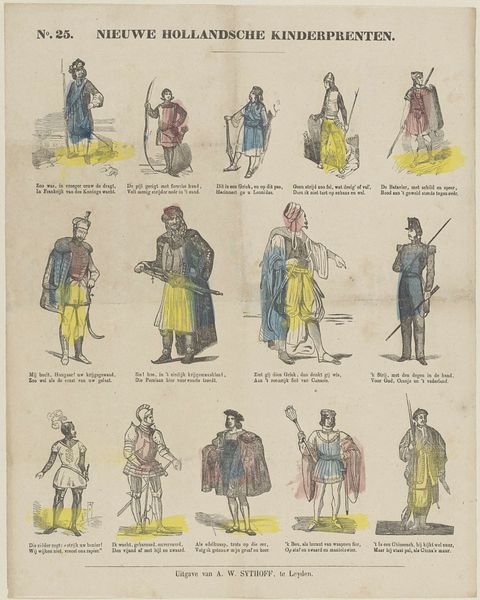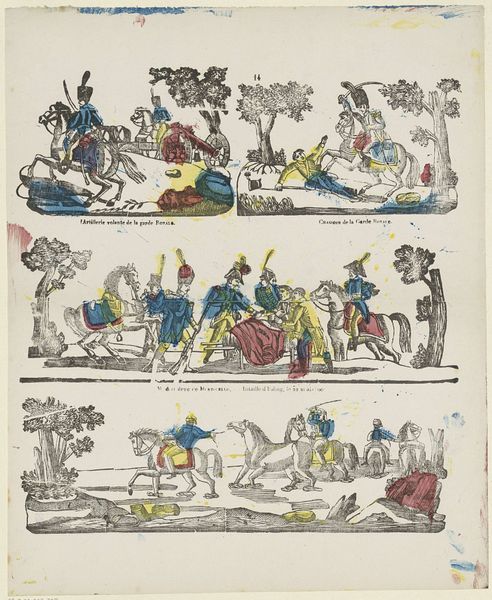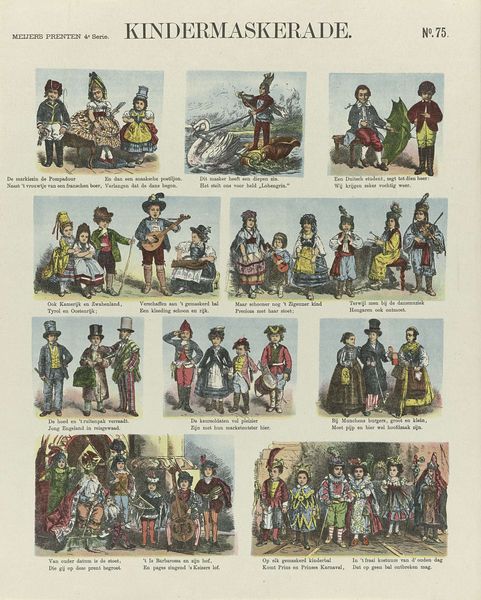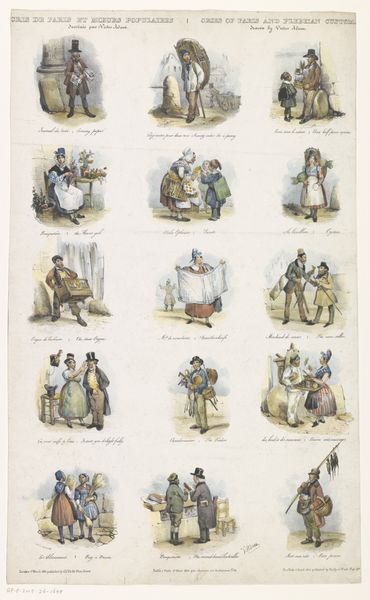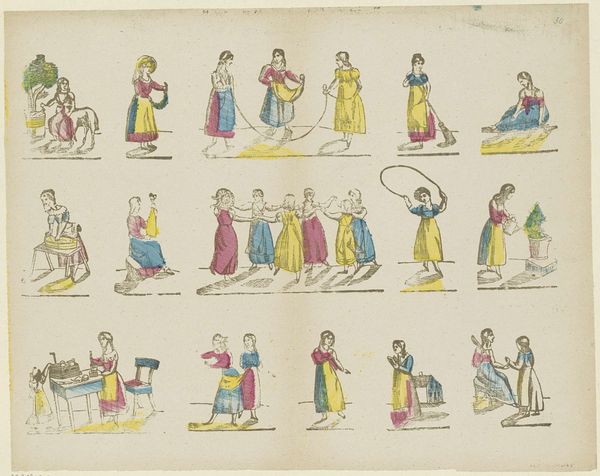
lithograph, print, etching, engraving
#
portrait
#
comic strip sketch
#
aged paper
#
16_19th-century
#
quirky sketch
#
lithograph
# print
#
etching
#
sketch book
#
personal sketchbook
#
sketchwork
#
journal
#
folk-art
#
orientalism
#
sketchbook drawing
#
genre-painting
#
history-painting
#
storyboard and sketchbook work
#
academic-art
#
decorative-art
#
sketchbook art
#
engraving
Dimensions: height 430 mm, width 341 mm
Copyright: Rijks Museum: Open Domain
Curator: What strikes me first is its theatricality; it’s almost like a series of stage sets. Editor: It's a fascinating piece from between 1840 and 1868, titled "De vier werelddeelen," or "The Four Continents," created by A. Jacobs. It’s rendered through lithography, etching, and engraving, a complex layering of printmaking techniques. What interests me is how it presents a worldview steeped in 19th-century Dutch perspectives. Curator: Worldview is right! Look at the stiffness of the European figures, especially compared to the almost cartoonish portrayal of those from Africa. Is that someone strumming a banjo? The composition itself feels incredibly compartmentalized, with each continent carefully boxed in. Editor: The print is quite explicit in constructing categories, aligning with the era’s obsession with taxonomy and ordering the world—and, of course, the inherent power dynamics within those categorizations. The way "folk art," "orientalism," and even "genre painting" are evoked simultaneously is very telling. Consider, too, who it’s meant for— "Kinderprenten," children’s prints, explicitly shaping young minds. Curator: So, even something seemingly decorative is actually deeply instructional and...well, problematic by today's standards. Editor: Exactly. And those techniques, the etching, the engraving...they aren’t merely aesthetic choices. They underscore the act of fixing and defining cultures in very specific, arguably artificial ways. The sketch-like quality almost suggests it’s unfinished, or perhaps revealing of the incompleteness of this understanding. Curator: It makes me think about how much our understanding of identity and culture is shaped by the media we consume from childhood onward. This print, despite its charm, feels like a cautionary tale. Editor: Agreed. And even the act of calling it "sketchbook art" romanticizes what is fundamentally a curated and hierarchical depiction of the world. Food for thought, indeed.
Comments
No comments
Be the first to comment and join the conversation on the ultimate creative platform.
